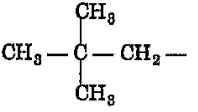The isomerism exhibited due to the difference in the size of the alkyl group attached to the same functional group is
Tautomerism
Stereo isomerism
Metamrism
Optical isomerism
The correct Answer is:3
Step by step video, text & image solution for The isomerism exhibited due to the difference in the size of the alkyl group attached to the same functional group is by Chemistry experts to help you in doubts & scoring excellent marks in Class 11 exams.
Topper's Solved these Questions
- BOOK - NARAYNACHAPTER - GENERAL ORGANIC CHEMISTRYEXERCISE - Level-II Isomerism5videos
GENERAL ORGANIC CHEMISTRY
- BOOK - NARAYNACHAPTER - GENERAL ORGANIC CHEMISTRYEXERCISE - Level-III21videos
GENERAL ORGANIC CHEMISTRY
- BOOK - NARAYNACHAPTER - GENERAL ORGANIC CHEMISTRYEXERCISE - Optical Isomerism:24videos
GENERAL ORGANIC CHEMISTRY
- BOOK - NARAYNACHAPTER - GENERAL ORGANIC CHEMISTRY EXERCISE - LEVEL-II (H.W)21videos
GENERAL ORGANIC CHEMISTRY
- BOOK - NARAYNACHAPTER - HYDROCARBONS EXERCISE - EXERCISE - 418videos
HYDROCARBONS
Similar Questions
Knowledge Check
- Question 1 - Select One
The type of isomerism due to different types on alkyl groups on either side of the functional group of compounds CH3CH2COCH2CH3 and CH3COC3C7 is referred as
AMetamerismBChain isomerismCFunctional isomerismDTautomerism - Question 2 - Select One
In alkyl cyanide alkyl group attached with
AC of CN groupBN of CN groupCEither C or N of CN groupDBoth C and N of CN group - Question 3 - Select One
In nucleotide phosphate group is attached to
AC-1BC-2CC-4DC-5
Name the alkyl group as represented below
 View Solution
View SolutionIn vinyl alcohol -OH group is attached to
View SolutionWhich of the following constututional isomerism arises due to different organic groups on either side of the functional group in the molecule?
View SolutionWhich of the following doesn't show functional group isomerism?
View SolutionIncrease in atomic size down the group is due to increase in
View Solution
